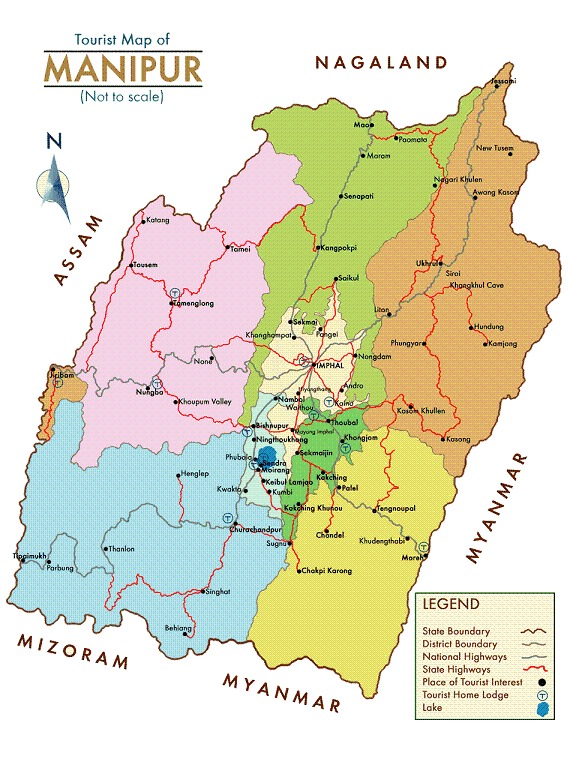Manipuri Association of Canada (MAC) is a non-political, non-religious, and not-for-profit organization established with an objective of protecting the general interest of the peoples of Manipuri origin living in Canada and elsewhere in the world and to foster unity and collective growth among members of their community in Canada.
The history of Manipuri immigrants in Canada is only about three decades old. The population though small is steadily growing into a vibrant community in Canada. MAC was formed out of an idea spurred into action by a spontaneous response from a large number of Manipuris living all over Canada to an opinion survey initiated by a small group in the month of April 2010. The activity culminated in a Grand Convention in Montreal during September 4-5, 2010 in which Manipuris from all over Canada participated.
The Organization came into existence during the convention by a unanimous decision of the General Body with the finalization of its objectives and appointment of its Directors and Office Bearers.
Any Manipuri eighteen years of age, currently a resident of Canada on a permanent or temporary basis and who subscribes to the aims and objectives of MAC can become a member of the organization.
Any individual from anywhere in the world that connects himself or herself to the land, people, and culture of Manipur in India for identity and beliefs irrespective of caste, creed, or religion will qualify as a Manipuri for the purpose of membership.
MAC has already identified some community actions and projects for implementation. MAC will always endeavor to connect Manipuris in Canada with peoples and organizations in Canada and the world to promote peace, harmony, and social progress.
Manipur and The Manipuris
Manipur is a small landlocked province of the Republic of India in its extreme north-eastern region. The conglomerate of people of various creeds and cultures inhabiting Manipur is called the Manipuris. During its three millennia-old histories Manipur’s territory pulsated expanding sometimes to several hundred kilometers into Burma in the east and into provinces of Assam and Tripura in the west. Historically, this land was known to various people by various names such as Moglei, Mekhlee, and Cassay, etc. and also in modern times as Kangleipak. The present-day Manipur can be located under the geographical coordinates: 240° N and 940° E. Its capital is Imphal.
Various anthropological and ethno-cultural accounts point to the south-central ancient China as the origin of the Manipuris constituted by the majority Meitei (or Meetei) and 29 other tribes that are grouped into the Naga, Kuki and Mizo. They speak various languages and dialects that have oriental origins. About 3 million Manipuris live in the present world about 10 % of them in Bangladesh, Burma, other provinces of India and as expatriates scattered all over the world. The Manipuris in Bangladesh and Burma are the historical migrants still persevering to preserve the Manipuri culture under the sweeping influence of an ocean of alien culture of the land where they live.
Accounts of Manipuri civilization date back to a millennium B.C. Recorded history however started around 33 A.D. when Nongda Lairen Pakhangba the first chronicled king ascended the throne. The vicissitudes of the prowess and glory of the several rulers in the hundreds of years that followed coiled around their encounters and dealings with peoples in China, Burma, Bangladesh and neighbouring principalities. The Kingdom of Manipur felled in the hands of the British Empire in 1881 and was eventually annexed to free India in 1949. Manipur became a province of the Republic of India in 1972.
Manipur has been a cradle of a unique civilization crafted from assorted elements of the orient and the Indian sub-continent. The vibrant population in the kaleidoscope of classic, tribal and modern cultures in this “paradise on earth” is visible to the world through their colourful dances and other performing arts, excellence in sports and martial arts, and unparalleled hospitality. Manipuris gave to India its classical dance the “Raas”. Manipuris gave to the world the game of “Polo”. This tiny province with a minuscule population is the breeding ground of India’s medal winners in many international sports events.
The scenic beauty of Manipur and the rich culture of its people remained hidden to foreign visitors for the past five decades as their entry in the region was restricted by the controversial Protected Area Permit (PAP). A concerted effort of the world Manipuris led by Manipuri Association of Canada (MAC) and supported by local think tanks caused removal of PAP by the Government of India from Manipur and some neighbouring provinces on December 30, 2010. This thoughtful act of India will bring a new era of development to the region free from socio-political strife. Explore Manipur.

